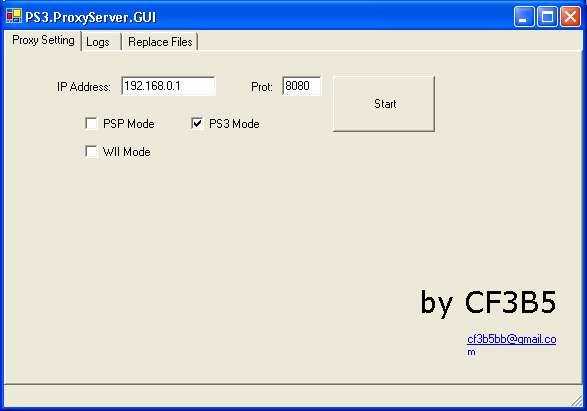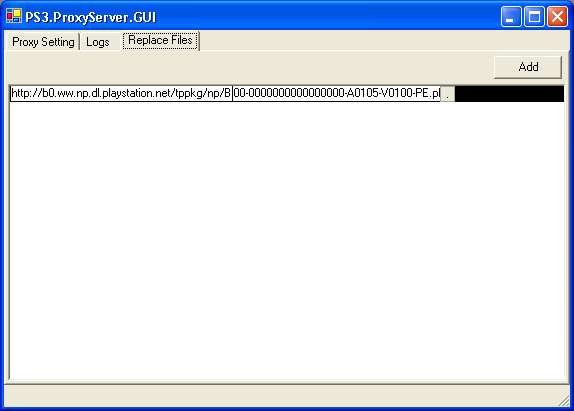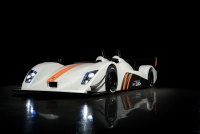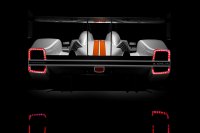A boa notícia é: o Facebook tem 400 milhões de usuários ativos e o Twitter tem por volta de 1,2 bilhão de tweets por mês. A má notícia é: o Facebook tem 400 milhões de usuários ativos e o Twitter tem por volta de 1,2 bilhão de tweets por mês.
Essa explosão das mídias sociais é um benefício, mas também um problema para os bancos. Por um lado, promove uma relação dinâmica e conexões mais profundas entre os clientes e as instituições financeiras. Do outro, representa um novo tipo de risco à fraude financeira.
A quantidade de informações pessoais compartilhadas publicamente em mídias sociais - incluindo nome completo, empregador, educação, idade e data de nascimento - constitui uma forma de "loja" para os fraudadores e os ajuda a cometer os crimes como se eles tivessem vasculhado o lixo de alguém para obter informações pessoais.
Como outros sites populares, as redes sociais estão expostas a ataques na segurança. O Facebook sofreu um ataque do Zeus, um cavalo de Tróia (malware) que rouba as informações bancárias. Uma estimativa aponta que os fraudadores enviaram cerca de 1,6 milhão de e-mails a uma taxa de 1000 mensagem/minuto por domínio.
Não é de se surpreender que os grandes bancos e as instituições financeiras tenham uma abordagem cautelosa para comprometer seus clientes em conversas digitais. Em vez de usar o Twitter e o Facebook para fazer promoção, muitos estão usando esses canais para monitorar as mensagens sobre problemas para resolvê-los o mais rápido possível.
Procure no Twitter as 20 maiores instituições financeiras dos Estados Unidos e você vai achar diversos perfis diferentes para cada uma. Quais perfis são verdadeiros e quais são canais para colocar conteúdo e atrair vítimas distraídas? Para o consumidor, a resposta não é tão aparente.
No Facebook, é possível encontrar promoções de marcas de alto nível. Quais perfis são verdadeiros e quais são falsos? A resposta não é óbvia. É claro que se algo soa muito bom para ser verdade, provavelmente não é. Mas considere o sucesso recente de fraude no Facebook por meio de uma promoção que supostamente dava um vale compras no valor de US$ 500 para as primeiras 12 mil pessoas que se tornassem fãs de determinada comunidade. Uma vez conectadas, as vítimas eram convidadas a preencher um formulário de avaliação de crédito que incluía dados pessoais críticos, fundamentais para os fraudadores.
De acordo com o Anti-Phishing Working Group - grupo que estuda a evolução, a propagação e analisa crimes de phishing na internet - cerca de 50% dos computadores pessoais e corporativos de 100 países foram infectados por malware.
É claro que os bancos devem limitar sua exposição. Uma vez que uma mídia social sofre um ataque, todo o portfólio do cliente como depósitos, poupança e cartão de crédito se torna alvo de fraude financeira. Enquanto as fraudes nas mídias sociais contam com o compartilhamento inocente de informações dos consumidores aparentemente sem importância, o poder de prevenir e de diminuir os riscos é das instituições financeiras.
Autenticações feitas com tokens, senhas temporárias, identificação keystroke ou de IP reduzem o risco de ataques. além de limitarem os ataques de informações coletadas por fraudadores nas mídias sociais. Esses sistemas de autenticações traçam o hábito dos consumidores como tempo, frequência, quantidade e destinos. Quando a atividade do consumidor mostra muita variedade ou anomalias, o sistema pode emitir um alerta de fraude antes que ela aconteça.
Enquanto a proteção a fraudes em tempo real é importante para transações com cartão de crédito, é crítico para transações com cartão de débito em ATMs, em que o débito em conta corrente é imediato. Com a proteção em tempo real, os sistemas podem identificar pagamentos que tenham alta probabilidade de fraude, evitando qualquer perda para o banco e para o consumidor.
A proteção em tempo real é apenas uma peça do quebra-cabeça. A outra peça é aproximar a proteção e a detecção de fraude como uma estratégia de relacionamento com os clientes. Quando as instituições financeiras gerenciam os produtos em unidades diferentes, a fraude pode ser evitada em uma unidade, mas continuar vulnerável em outra. Entretanto, quando uma instituição financeira cria plataformas com informações completas do portfólio bancário do cliente, pode identificar atividades suspeitas que pareceriam normais se vistas apenas por um ângulo.
As pessoas não vão parar de compartilhar as informações pessoais. A tendência é que isso cresça exponencialmente. Imagine então se um fraudador sabe, por meio de mídias sociais, seu nome, data de nascimento, nome do seu bicho de estimação, a escola em que você estudou e o nome do seu empregador. Imagine o número de pontos de vulnerabilidade que isso cria em suas transações financeiras.
Agora imagine se você postar uma mensagem em seu Farmville que você precisa de ajuda para alimentar seus animais enquanto estiver de férias. Sua ausência cria uma oportunidade perfeita para os fraudadores atacarem enquanto você não estiver prestando atenção. A velocidade de fraudes baseadas em mídias sociais demanda respostas em tempo real. Com uma boa estratégia de proteção, os bancos diminuem os riscos de fraude e adotam uma estratégia alinhada com a nova cultura e com o paradigma técnico de mídias sociais.
iMasters
Mídias sociais: benefício ou problema para os bancos?
Tags:
Internet,
Publicidade,
Redes Sociais
Publicado: terça-feira, 18 de janeiro de 2011 às 12:20
Permalink:
Copiar
Link copiado para a área de transferência!
Houve um erro ao copiar o link para a área de transferência.
Uma imagem

Sabia que Felipe Massa carregava Fernando Alonso nas costas, mas não no sentido literal da palavra...
Publicado: terça-feira, 18 de janeiro de 2011 às 07:30
Permalink:
Copiar
Link copiado para a área de transferência!
Houve um erro ao copiar o link para a área de transferência.
Esso. Helps your car stay young.
Publicado: segunda-feira, 17 de janeiro de 2011 às 17:27
Permalink:
Copiar
Link copiado para a área de transferência!
Houve um erro ao copiar o link para a área de transferência.
Caterham-Lola SP/300.R
A suspensão é do tipo pushrod com altura ajustável, os freios são AP, e os pneus, Cooper. O SP/300.R foi criado visando uma competição monomarca em 2012, embora uma versão para as ruas esteja em cogitação.
Segundo Ansar Ali, diretor da Caterham, "o esporte a motor não é só parte da história da Caterham, é a característica principal de nossos veículos: carros de corrida para as ruas. Hoje, não são somente as corridas o que movimentam os negócios, é uma parte intrínseca da nossa fábrica, e o SP/300.R representa o próximo passo no desenvolvimento de nossa linha de produtos".
A produção do Caterham-Lola SP/300.R será limitada a 25 unidades por ano, ao preço de 60 mil libras esterlinas.
CATERHAM OPENS EXCITING NEW CHAPTER IN ITS HISTORY
* British sportscar maker unveils its first sports prototype racer
* Design input from Lola and state-of-the-art Ford power
* Supercharged Ford Duratec power to generate 0-60mph in around 2.5 seconds
Caterham Cars has opened an exciting new chapter in its 50-year history with the release of its first ever sports prototype racing car for a new one-make series and the trackday community.
Unveiled at the Autosport International Show (Birmingham, UK), the Caterham-Lola SP/300.R is a major new addition to sit alongside the legendary Seven, yet remains true to its lightweight, minimalist DNA to deliver all the thrills of driving a fast, but confidence-inspiring, sportscar.
Created in partnership with another iconic British engineering brand, Lola Cars, the aesthetically-sensitive sports prototype will also feature the debut of Caterham Motorsport's new supercharged version of the Ford Duratec power plant, expected to produce around 300bhp.
Caterham is in the final stages of development of the powertrain and handling characteristics of the car, in readiness for a one-make championship to start in 2012, while the feasibility of a road-legal version of the car is also being considered.
Only 25 SP/300.Rs will be manufactured each year, allowing Caterham to focus on enhancing the build quality of every vehicle and maximising its renowned one-to-one customer service.
The car will provide the ‘top end' natural progression for Caterham's already successful domestic and international racing ‘ladder'. It will also provide the blossoming premium trackday community - both home and abroad - with a potent new model.
Bearing subtle design cues from the Seven, the first new model from Caterham since the 21 road car reproduces the Company's core motorsport values of affordability, reliability and accessibility.
With Lola, as technical design consultant, leading the aerodynamic styling and downforce development in collaboration with Caterham's design direction, the Seven's engineers have been responsible for developing the power plant, braking system and making sure the two-seater's renowned ride and handling characteristics are firmly transferred into the SP/300.R.
While the global expansion of the Seven's motor racing activity will continue unabated, the SP/300.R will allow Caterham's loyal clientele to move further up the performance racing ‘ladder' without having to leave the proven expertise and ‘value for money' of the Company's motorsport infrastructure.
"Motorsport is not only part of the history of Caterham, it's been the lifeblood running through the character of our vehicles - race cars for the road," explains Ansar Ali, managing director of Caterham Cars. "Today, racing is not only the heartbeat of the business, it's an intrinsic part of our fabric both here and abroad and the SP/300.R represents the next logical step in the development of our product offering."
Drivetrain
The beating heart of the SP/300.R will be a Caterham-tuned, supercharged version of Ford's 2.0L Duratec unit, which will produce 300bhp.
The Company's long-standing relationship with Ford continues to allow Caterham's engineers unparalleled technical access to the Ford range of engines. Today, Ford products power the entire range of Caterham cars, from the entry-level Roadsport through the entire Superlight collection.
Caterham's engineers have chosen the supercharged Duratec with its drivers in mind. As with all Caterham products, the driving experience is at the core of the SP/300.R's design.
The supercharged induction module has therefore been chosen for its linear torque delivery across the entire engine speed range, which is perfectly-matched to the lightweight architecture of the car.
The Duratec unit is well-known to Caterham's engineers and already boasts a proven track record as a resilient engine that is cost-effective for customers to run, while other offerings feature a more ‘all or nothing' character and require further refinement before Caterham will consider using them.
Caterham has worked alongside partners such as Pectel to deliver a highly-developed package that will reward drivers with advanced data logging and features such as ‘push to pass' power enhancement and an integrated semi-automatic gearshift control.
The SP/300.R will be capable of being adapted to suit alternative engines but the factory-fit engine will offer unrivalled levels of reliability - together with a perfectly-matched Hewland semi-automatic FTR transmission, Caterham aims to reproduce the enormously-durable drivetrain solution that has been so successful in the Superlight R300 series, where engine rebuilds are virtually unnecessary.
Chassis
The rich racing heritage of the Caterham Seven and Caterham's motorsport expertise will ensure the success of the Company's expansion into sports prototype racing.
However to achieve that end, Caterham has teamed up with the world's leading manufacturer of customer race cars, Lola Cars. Its expertise, particularly in the sports racing category, was invaluable in the creation and styling of a bespoke chassis that forms the basis of the SP/300.R.
With the styling aerodynamically, rather than aesthetically led, the SP/300.R has been designed using Lola's state-of-the-art CFD (Computational Fluid Dynamics) technology, with input and critique from Caterham.
The basic chassis is an aluminium tub with a longitudinally mid-mounted engine, coupled to a stress-bearing rear transaxle. A forward splitter and large rear wing reduce lift, while a flat underbody maximises ground effect benefits.
A broad aero platform generates optimal downforce and balance, while the aerodynamic performance is fine-tuned by ducts and dive-planes. The SP/300.R bodywork also features an F1-style raised nose section and sectioned panels, which will help reduce repair costs, ease maintenance and, importantly, allow single-handed removal of body panels track-side.
Caterham's research suggests that most sports prototypes in today's market require more than one person to assist in the removal of body panels, e.g. oil check, set-up, etc; the SP/300.R will be the only sports prototype that offers this unique, flexible and yet convenient feature.
The car also takes subtle design cues from the instantly-recognisable Caterham Seven; for instance, the Seven's grille shape appears beneath the raised nose of the SP/300.R.
Performance
The pairing of Lola's world-beating aerodynamic package with the Ford engine will produce a car that will easily meet the desires of Caterham customers, whether they are seeking their first serious step into sports prototype racing or the ultimate trackday machine.
The supercharged Duratec's 300bhp will propel the sub-600kg car from 0-60mph in around 2.5 seconds, translating into 500bhp-per-tonne, excluding the driver.
The gearing of the car has been selected to reach maximum rpm in top gear at the end of Spa-Francorchamps circuit's Kemmel Straight, chosen as it is one of the more frequently-visited race and trackday venues. Top speed will be around 170mph.
Suspension
The SP/300.R will benefit from full race suspension - front and rear dual wishbones with pushrod dampers, adjustable ride height and bespoke wheels and tyres will all make for a race car of exquisite balance and stability.
The rear suspension architecture is derived from that used at the rear end of the Lola Formula 3 and World Junior cars - coupled with the high downforce generated by the aerodynamic package, this will be a direct and rewarding race car to drive.
Wheels & Tyres
Thanks to Caterham's long-standing partner, Cooper Avon Tyres, the SP/300.R will stand on bespoke rubber developed specially by Cooper Tire for this car.
Cooper Tire provides tyres for the British Formula 3 International Series, acknowledged as the toughest domestic single-seater championship in the world and a recognised ‘stepping stone' to Formula 1. The SP/300.R's tyres are fitted to 13-inch race rims.
Measuring a muscular 250mm wide at the rear, and 180mm at the front, the tyres have been specifically designed to cope with vast engine torque married to a lightweight chassis.
Safety
Naturally, the SP/300.R has been built to comply with MSA safety regulations. The main component of the safety system is a roll cage, which has been designed specifically for the car and incorporated into the styling schemes.
The chassis has also been designed as a race chassis with the requisite crash structures. Other components include the six-point harness, fire extinguisher, cut-off switch and so on.
Components
In keeping with the SP/300.R's stature as a premium race product, Caterham has selected fixings and fittings of a very high quality.
These include the steering wheel, which incorporates data display (Stack/MOMO), wheels (ATS, Speedline or OZ), brakes (AP Racing) and driver's harness (Schroth).
One-make championship
With Caterham's vastly rich heritage in motorsport - both domestically and internationally - it is no surprise to find that Caterham Motorsport is planning a prestigious one-make series in which the SP/300.R will star.
The details of its own championship are yet to be finalised, but the SP/300.R series will initially focus on UK circuits, with the potential addition of one round abroad.
However, the projected success of the cornerstone debut season is expected to make the SP/300.R and its race series eminently marketable further afield in Europe, which will provide a major boost to Caterham's already thriving export market.
Caterham Motorsport
Caterham has proven over the last 25 years that it is expert in producing and managing world-class motor racing championships and events.
The Company's motorsport ‘ladder' provides a cost-effective, easy-to-run solution for drivers of any ability to get into racing, from complete novices with the Academy series to the Superlight R300 for seasoned semi-professionals.
The Caterham Academy, which takes novice non-racers through the process of getting their race licence to enjoying their first season of competitive action, has become one of the UK domestic scene's lynch pins, creating around 750 brand new racing drivers since its inception in 1995.
It is the proven organisational expertise and infrastructure that will run the new one-make championship for the SP/300.R, starting in 2012.
The Caterham-Lola SP/300.R is priced at £60,000, excluding local taxes.
Tags:
Automobilismo,
Carros,
Caterham
Publicado: segunda-feira, 17 de janeiro de 2011 às 12:22
Permalink:
Copiar
Link copiado para a área de transferência!
Houve um erro ao copiar o link para a área de transferência.
"We just bought our 4-year old an American Eagle."

Publicado: domingo, 16 de janeiro de 2011 às 17:35
Permalink:
Copiar
Link copiado para a área de transferência!
Houve um erro ao copiar o link para a área de transferência.
Gran Turismo 5 Offline Update
Para resolver esse percalço, você só precisa baixar o arquivo de atualização no seu PC e de um servidor proxy, além de uma estrutura de rede local em sua casa, ou um cabo crossover, cujos terminais RJ45 são ligados de forma a criar uma conexão entre dois aparelhos sem a necessidade de um roteador ou switch entre eles.
Agora, irei explicar o processo de atualização offline do Gran Turismo 5.
Para início de conversa, faça o download do PS3 Proxy Server. É ele que fará o "meio-de-campo" entre seu PC e o seu PlayStation 3, fazendo o console "pensar" que o PC é o servidor de download da Sony.
Instale e execute o PS3 Proxy Server. Ele não cria ícones no desktop nem no menu Iniciar, então, vá ao Windows Explorer e acesse a pasta C:\Arquivos de Programas\CF3B5\PS3.ProxyServer, e faça um duplo clique no arquivo PS3.ProxyServer.GUI.exe.
Enquanto você configura sua rede local, você pode baixar o arquivo de atualização do Gran Turismo 5 através deste link. Escolha o arquivo da versão que corresponde à sua midia, se é americana, europeia ou japonesa. Caso não queira baixá-lo agora, espere para fazê-lo durante o processo de atualização.
No PS3 Proxy Server, na aba Proxy Setting, digite, no campo IP Address, o endereço IP correspondente ao seu PC. Você pode verificar isso na linha de comando, digitando ipconfig e teclando ENTER, ou acessando as propriedades de sua conexão de rede local. No campo Port, digite 8080. Selecione a opção PS3 Mode. Aperte Start. O servidor proxy será iniciado e receberá as requisições de acesso à internet de seu PlayStation 3.

Agora vem a parte mais importante: a configuração de proxy. Escolha para usar um servidor proxy, e digite o endereço IP e a porta que você configurou no PS3 Proxy Server. Saia da configuração e inicie o Gran Turismo 5.
Ele verificará, através da conexão com o seu computador, que existe atualização para o software do jogo. Inicie o download. Aguarde de cinco a dez segundos e interrompa o download. Ele voltará para a tela principal do sistema operacional do PlayStation 3. Isso é normal. O Gran Turismo 5 não iniciará mais enquanto seu console estiver conectado à internet e "saber" que existem atualizações.
Volte ao seu PC. Vá ao PS3 Proxy Server e abra a aba Logs. Haverá alguns registros de requisições a um endereço de internet semelhante a este: http://b0.ww.np.dl.playstation.net/tppkg/np/BCUS98114/BCUS98114_T13/7325c8d19af454e3/UP9000-BCUS98114_00-0000000000000000-A0105-V0100-PE.pkg. Esta é a localização do arquivo de atualização que o Gran Turismo 5 tenta baixar. Copie este URL para a área de transferência, o famoso CTRL + C. Caso você ainda não tenha baixado este arquivo pelo método mencionado acima, vá a um navegador de internet e faça o download.
Com o arquivo de atualização salvo em seu PC, vá à aba Replace Files. Clique em Add. Aparecerá uma linha com duas colunas. Na coluna esquerda, cole o endereço do arquivo de atualização. Na coluna direita, aperte no botão cinza existente. Aparecerá uma janela de seleção de arquivo. Selecione o arquivo baixado. É isto que fará a "mágica".

Pronto! Depois de reiniciado o Gran Turismo 5, feche o PS3 Proxy Server. Caso preferir, pode excluir o arquivo de atualização do seu PC ou faça backup. O seu Gran Turismo 5 estará atualizado. Entre as principais novidades, existe a opção de defeitos mecânicos no veículo em virtude de colisões, para que surtam efeito apenas por alguns segundos ou se será preciso ir ao pit lane para consertá-los, além de áreas online no GT Mode, como o Open Lobby e os Seasonal Events.
Este procedimento funciona não só para o Gran Turismo 5, mas para qualquer outro título do PlayStation 3. Basta executar as mesmas tarefas descritas acima para verificar se o processo de atualização é executado da mesma maneira. Inclusive, é possível fazer downloads de add-ons adquiridos de graça ou mediante pagamento. Basta verificar pelo log o URL do arquivo, baixá-lo em um navegador ou gerenciador de downloads, e realizar o processo de substituição do endereço de internet pelo local do arquivo em disco, na aba "Replace Files".
Tags:
Gran Turismo,
Gran Turismo 5,
Hardware,
Informática,
PlayStation,
Polyphony Digital,
Racing Simulators,
Sony
Publicado: domingo, 16 de janeiro de 2011 às 12:04
Permalink:
Copiar
Link copiado para a área de transferência!
Houve um erro ao copiar o link para a área de transferência.
Assinar:
Postagens (Atom)



